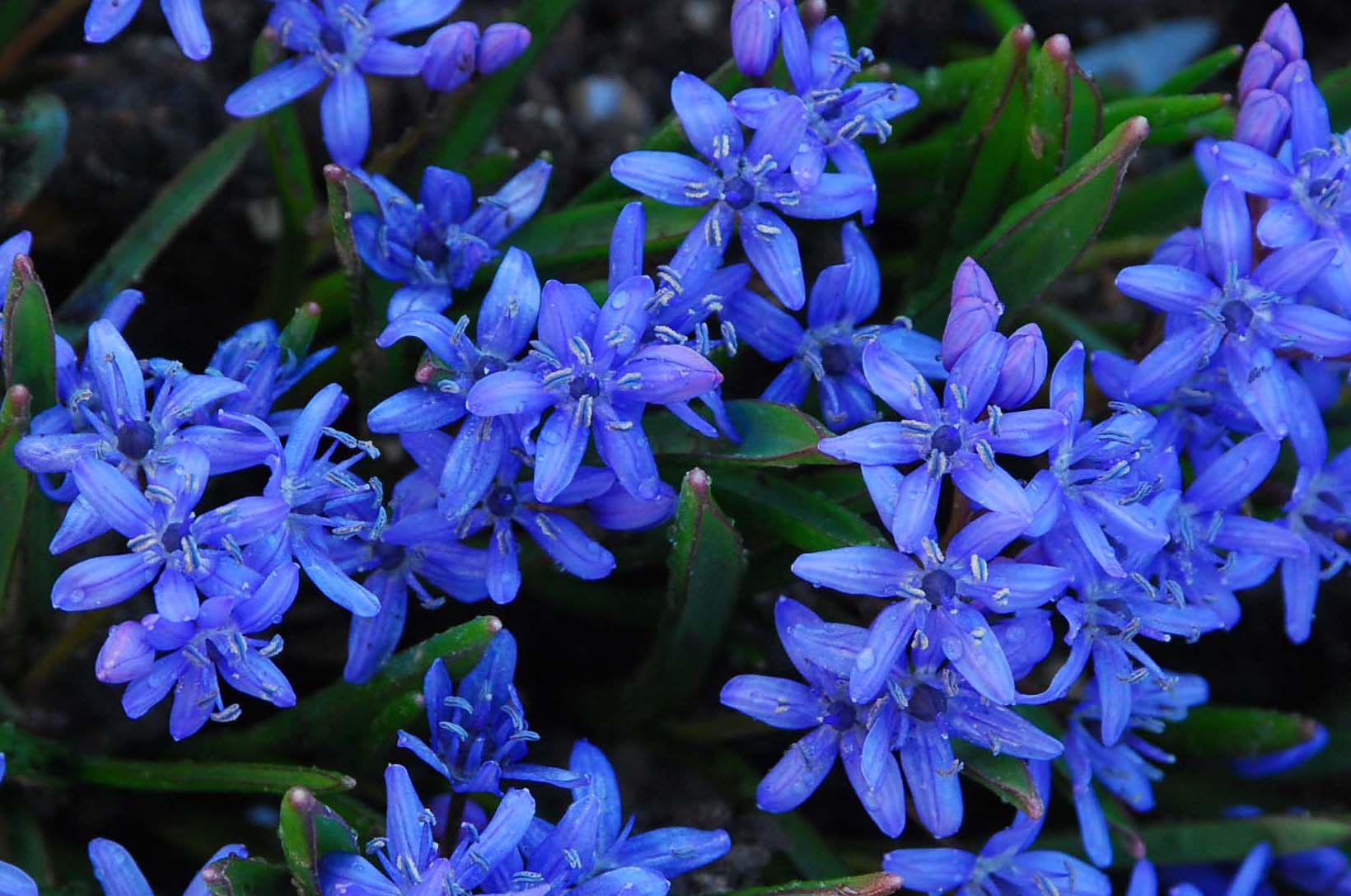 Bluest of bulbs: Chionodoxa forbesii and Scilla siberica
Bluest of bulbs: Chionodoxa forbesii and Scilla siberica
There is something mysterious about the transformation of winter's leaden skies into cerulean ones, and as if to celebrate, the precocious bulbs take upon the brilliant color. Blues may have melancholic associations, which dissipate when paired with springtime greens and whites. Rare are blues in summer (unless you count hydrangeas) that one should cherish them in spring before they fade away, leaving us only the skies.
The springtime blues are found among the so-called 'minor' (an injustice to their prowess and beauty) bulbs, which often belong to the Hyacinthaceae. They often emerge from the melting snows of southern Europe and Turkey, and indeed this timing is immortalized in Chionodoxa (Greek for snow in 'chion' and glory in 'doxa'). Chionodoxa and Scilla are the classic choices for gardeners desiring naturalized sweeps of blue. They are prodigious seeders and clumpers, rewarding an initial investment of a few hundred bulbs.
On Chionodoxa in My Garden in Spring, the British gardener E.A. Bowles wrote: "There is a great charm about the red, polished noses they thrust through so early, and which, on a sunny day, suddenly split asunder and reveal the neatly-packed flower-buds, looking like a blue ear of wheat. This is only promise, and the reward comes when the two leaves lie close the ground, and the blue spikes are feathery sprays." Chionodoxa forbesii and C. sardensis frequently top naturalizing bulb lists. A giant in its genus, C. forbesii has violet-blue flowers burst with white centers. Having deep blue flowers with tiny white centers on 6" inch brown stems, C. sardensis colonizes gardens effectively as long as adequate light is provided.
Scilla siberica (Siberian squill) produces 1/2 in pendent, bell-like flowers. Each leaf has a hooked end that lengthens later in the season. 'Spring Beauty' has the darkest blue', although the color occurs in wild populations.
Scilla bifolia
For semi-shaded spots, Scilla bifolia will spread where few early bulbs will tread. Its racemes resemble constellation of blue stars. Although white and pink forms are available, I prefer the typical bright blue. Bowles exhorted his readers to "[b]uy as many Scilla bifolia as you can afford, then, but choose them a permanent home." A bag of 100 bulbs only sets you back $16 to $20. Mix them with Chionodoxa and plant them where pools of blue are desired. It is more inexpensive than chasing sapphires, and the immense pleasure of chasing away winter blues with springtime ones is a satisfying ritual.
Chionodoxa forbesii (Forbes's glory of the snow) and Muscari armeniacum (grape hyacinth) with a swig of Mertensia virginica (Virginia bluebells)
~E



